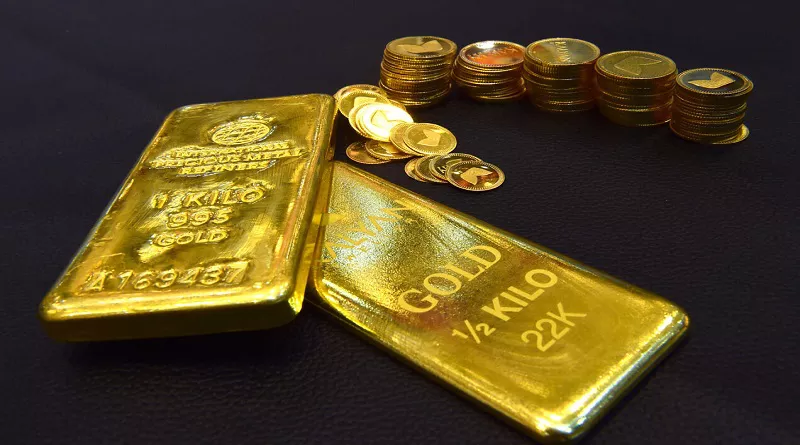Investing in gold is a popular choice for many individuals looking to diversify their portfolios. One important concept in gold investment is the “spot price.” This article will explain what the spot price is, how it affects the cost of buying gold, and how much over spot investors typically pay for physical gold.
What Is the Spot Price of Gold?
The spot price of gold is the current market price at which gold can be bought or sold for immediate delivery. It reflects the latest trading price in the global market and fluctuates throughout the trading day based on supply and demand dynamics.
The spot price is primarily determined by various factors, including:
Global Economic Conditions: Economic indicators, such as inflation rates and currency strength, can significantly influence gold prices.
Interest Rates: Lower interest rates tend to increase gold prices as they reduce the opportunity cost of holding non-yielding assets like gold.
Geopolitical Events: Political instability and conflict often drive investors toward gold as a safe haven.
Market Speculation: Traders’ expectations can also lead to price fluctuations based on anticipated future trends.
Understanding the spot price is crucial for any investor considering buying gold, as it serves as the baseline for gold transactions.
The Premium Over Spot Price
When purchasing physical gold, investors typically pay a price that exceeds the spot price. This additional cost is known as the “premium.” The premium accounts for various factors that add to the cost of gold beyond just its market value.
Factors Influencing the Premium
Manufacturing Costs: Producing gold coins or bars incurs manufacturing expenses. This includes the cost of minting, refining, and packaging.
Demand and Supply: High demand for certain gold products, such as coins or bars, can lead to higher premiums. If supply is limited, dealers may charge more.
Form of Gold: Different forms of gold have varying premiums. For example, gold bullion coins may carry a higher premium than larger gold bars due to their collectible nature.
Dealer Markup: Gold dealers may add their own markups to cover operational costs and ensure profitability.
Market Conditions: In times of market uncertainty, premiums can rise as demand for physical gold increases.
Typical Premiums Over Spot
Premiums can vary widely based on the type of gold product purchased and market conditions. Generally, premiums for gold bullion coins can range from 2% to 8% over the spot price. In contrast, larger gold bars often have lower premiums, typically around 1% to 4%.
For example, if the spot price of gold is $1,800 per ounce, a bullion coin might be priced at $1,836 to $1,944, depending on the premium. Meanwhile, a one-ounce gold bar could range from $1,818 to $1,872.
The Importance of Shopping Around
Investors should always shop around when buying physical gold. Different dealers may charge varying premiums based on their pricing strategies. Comparing offers can help investors secure the best deal and minimize costs.
Online vs. Local Dealers
When considering where to buy gold, investors have the option of choosing online dealers or local shops. Online dealers often offer competitive prices due to lower overhead costs. However, local dealers can provide valuable insights and allow for immediate purchases.
It is essential to check the reputation of the dealer, regardless of the purchasing method. Look for customer reviews and ratings to ensure that you are dealing with a reliable source.
Understanding the Total Cost of Ownership
When investing in gold, it’s essential to consider the total cost of ownership. This includes not only the premium paid over the spot price but also additional expenses such as shipping, insurance, and storage fees.
Storage Costs
Physical gold requires secure storage. Many investors choose to store their gold in safe deposit boxes or vaults, which can incur annual fees. The choice of storage method can significantly affect the overall cost of owning gold.
Insurance Costs
Investors should also consider insuring their gold holdings. While this adds to the cost, it provides peace of mind in case of theft or loss. Insurance premiums vary based on the value of the gold and the coverage chosen.
Timing Your Purchase
Timing can play a crucial role in gold investment. Investors should be aware of market trends and economic indicators that can impact gold prices. Purchasing during a dip in the market may lead to lower premiums and better overall pricing.
Market Trends
Following market trends can help investors make informed decisions. Keeping an eye on the global economy, interest rates, and geopolitical events can provide insights into potential price movements.
See also: What Is The Spot Price Of Gold
Conclusion
Understanding how much over spot gold costs is vital for any investor looking to buy physical gold. The spot price serves as the foundation for gold pricing, but premiums can vary based on numerous factors.
By researching the market, comparing dealer offers, and considering total ownership costs, investors can make informed decisions. With careful planning and timing, investing in gold can be a rewarding endeavor that adds value to a diversified portfolio.
As always, it’s advisable to seek guidance from financial advisors to navigate the complexities of gold investment successfully.
Related topics:

